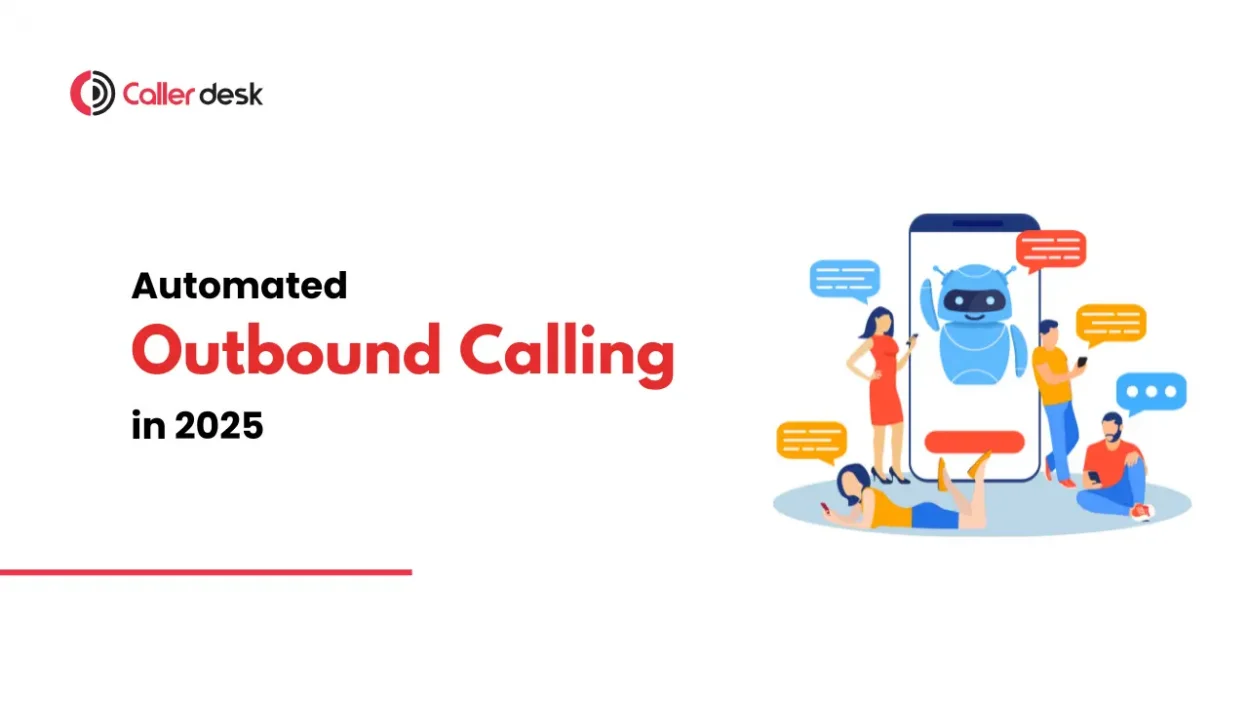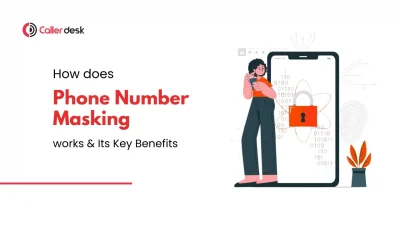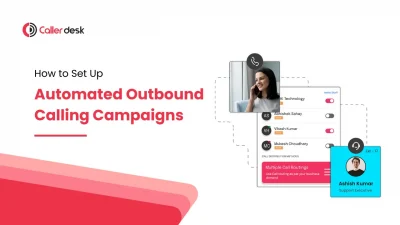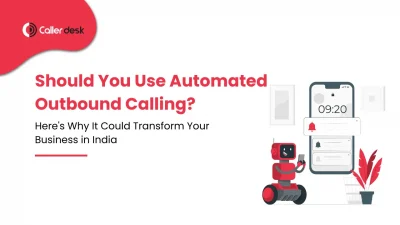Imagine reaching thousands of potential customers in just minutes—without overloading your team. Automated outbound calling is not just a tech upgrade; it’s a business game-changer in 2025. It helps companies improve efficiency, boost productivity, and engage customers without manual effort.
More businesses are adopting automated outbound calling solutions to streamline operations and scale faster. In this guide, we’ll explore how automated outbound calls are shaping the future, the best ways to use them, and how they can help your business grow.
What is Automated Outbound Calling
Automated outbound calling is a technology that makes calls automatically to a list of people without needing a person to dial each number. Businesses use it for lead generation, customer surveys, appointment reminders, and payment collections.
With automated outbound calls, companies can reach more people quickly, save time, and reduce manual work. Using an outbound calling system or outbound dialer software, businesses can handle large call volumes effortlessly.
As more companies switch to automated cloud-based outbound calling, they can grow faster, lower costs, and improve customer communication-making it an essential tool for modern businesses.
Benefits of Automated Outbound Calling
1. Increased Efficiency
Imagine a bakery that spends hours calling customers to remind them about their cake orders. With automated outbound calls, those hours are saved! Now, the team can focus on baking instead of dialing numbers.
An automated outbound calling system handles repetitive tasks like reminders and follow-ups, so businesses can work faster and smarter. Whether you run a small shop or a large company, this technology makes daily operations smooth and effortless.
2. Enhanced Productivity
Ever missed an appointment because no one reminded you? Automated outbound calling solutions fix that. They send timely reminders for doctor visits, service appointments, and more—so customers never forget.
For businesses, this means employees don’t have to spend time on routine calls. Instead, they can focus on growing the business. It’s like having a virtual assistant that never forgets!
3. Cost Efficiency
Hiring extra staff to make calls can be expensive. That’s where automated outbound software comes in—it works 24/7 without extra costs.
For example, an e-commerce business can use outbound automated calls to update customers about their orders. This saves money on staffing while keeping customers informed—a win-win for businesses looking to cut costs while improving service.
4. Scalability
Handling a holiday rush or a growing customer base? Outbound dialer software makes it easy to manage high call volumes without overwhelming your team.
Whether you need to send order confirmations, delivery updates, or service reminders, automating outbound calls helps you scale operations effortlessly. Your team stays stress-free, and customers stay happy!
5. Consistent Messaging
Imagine you run a bank or a telecom company. Every customer needs to hear the same clear and professional message—without confusion.
With an automated outbound calling system, businesses can ensure that every call delivers the right message—whether it’s a policy update, payment reminder, or important announcement. This helps build trust, consistency, and brand credibility.
Steps to Setting Up Automated Outbound Calling
1. Define Your Goals and Audience
Start by setting clear objectives—whether it’s lead generation, customer service, appointment reminders, or feedback collection. Knowing your audience’s preferences and needs helps in crafting the right message.
For example, a charity organization might use automated outbound calls to reconnect with past donors for a new fundraising campaign, ensuring they reach those who care about similar causes.
2. Choose the Right Technology
Picking the right outbound dialer software is key to automating outbound calls effectively. Businesses can choose from:
- Predictive dialers – Ideal for high-volume sales and lead generation.
- Power dialers – Great for small teams that need controlled, steady outreach.
- IVR systems – Help customers navigate options with pre-recorded messages.
For example, a real estate agency can use a predictive dialer to instantly connect with potential buyers instead of manually dialing numbers.
3. Craft Compelling Scripts
A well-crafted script makes a huge difference. Keep it short, engaging, and personalized to make customers feel valued.
Instead of a robotic message like:
🚫 “This is a recorded message.”
Try:
✅ “Hi [Customer Name], this is [Your Business] reminding you about your upcoming appointment. Press 1 to confirm or 2 to reschedule.”
This makes the interaction more human and effective.
4. Ensure Compliance
Always follow legal guidelines like the Telephone Consumer Protection Act (TCPA) and provide an opt-out option. This keeps your business trustworthy and avoids legal trouble.
For instance, adding:
“Press 9 to opt out of future calls”
ensures compliance and respects customer preferences.
5. Test and Optimize
Before launching, test your scripts, call flows, and software integrations. Monitor key metrics like:
- Call success rates – How many people answer?
- Customer responses – Are they engaging with your message?
- Conversion rates – Are calls leading to actions?
For example, a healthcare provider might test two different reminder messages to see which gets higher appointment confirmations. Adjusting strategies based on results helps maximize efficiency.
Best Practices for Automated Outbound Calling
1. Strategic Timing
Timing can make or break your call success. Schedule automated outbound calls when your audience is most likely to answer.
For example, a restaurant launching a new delivery service should call customers in the late afternoon or early evening, right when people start thinking about dinner. This increases the chances of engagement and reduces call rejection rates.
2. Personalization
People are more likely to respond when a message feels personal and relevant to them. With automated outbound calling, businesses can make their calls feel more tailored by:
- Addressing customers by name – A simple “Hi [Name]” makes the call feel more personal.
- Referring to past interactions – Mentioning previous purchases or inquiries builds connection and trust.
- Offering relevant suggestions – Recommending products or services based on customer preferences makes the call more engaging.
For example, if a travel agency calls a customer who previously booked beach vacations, they could suggest a special holiday package for a tropical destination, making the call feel personal and valuable.
3. Data Analytics
Making calls isn’t enough—analyzing call data helps improve results. Businesses should track:
- Call pick-up rates – How many people answer?
- Call duration – Are customers staying engaged?
- Response trends – What’s working, and what’s not?
For example, a nonprofit organization might analyze which donor groups respond best to fundraising calls and use that insight to focus future campaigns on similar audiences.
4. Clear and Concise Messaging
People are busy—no one wants a long, robotic call. Keep messages short, engaging, and to the point.
For example, if a store is promoting a weekend sale, a simple message like:
✅ “Get 30% off this weekend! Visit us or shop online today.”
works much better than a long-winded promotional pitch.
5. Compliance and Consent
Always follow legal guidelines when making outbound automated calls. Ensure you have:
- Customer consent before calling
- An opt-out option to respect their choice
- Compliance with local laws (e.g., Do Not Disturb regulations)
For example, a doctor’s office sending appointment reminders must ensure patients have agreed to receive automated calls, helping to build trust and avoid legal issues.
6. Follow-Up Strategy
One call isn’t always enough. A good follow-up strategy helps keep customers engaged and increases conversions.
For instance, an online learning platform might:
- Send an initial welcome call to new students
- Follow up with a reminder about enrollment deadlines
- Check in later to offer support
Consistent follow-ups show you care and boost engagement—whether it’s for sales, bookings, or customer support.
The Future of Automated Outbound Calling
Looking ahead, advancements in artificial intelligence (AI) and omnichannel integration will further revolutionize automated outbound calling:
1. AI-powered Solutions
Artificial Intelligence (AI) is making automated outbound calls more intelligent. Instead of just playing pre-recorded messages, AI can understand customer questions and respond in real time.
For example, an online store can use AI-powered automated outbound calling software to:
- Answer common customer questions about orders and returns
- Help customers track their deliveries
- Connect them to a human agent only when needed
This makes customer service faster, more helpful, and more cost-effective.
2. Omnichannel Integration
In the future, outbound automated calls won’t work alone. Businesses will combine calls with SMS, emails, and chatbots to create a smooth customer experience.
For example, a bank helping customers apply for a loan could:
- Call to explain the loan process
- Send an SMS with a reminder to submit documents
- Email to confirm the application is received
This makes communication clear and easy, so customers never feel lost or confused.
3. Advanced Personalization
Businesses will use customer data to make calls more personal and relevant. Instead of sending the same message to everyone, calls will be customized based on customer preferences and past behavior.
For example, a gym could use automated cloud-based outbound calling to:
- Suggest fitness classes based on what a member enjoys
- Send reminders to stay on track with workouts
- Offer special discounts for frequent visitors
This personal touch makes customers feel valued and keeps them engaged with the business.
Conclusion
Automated outbound calling is a cornerstone of modern business strategy, offering unparalleled efficiency, scalability, and customer engagement capabilities in 2025 and beyond.
By embracing technology, defining clear objectives, and adhering to best practices, businesses can unlock the full potential of automated outbound calling to achieve sustainable growth and customer satisfaction.
Schedule a free demo with CallerDesk today and see how cloud telephony can make business communication easier and more efficient.





